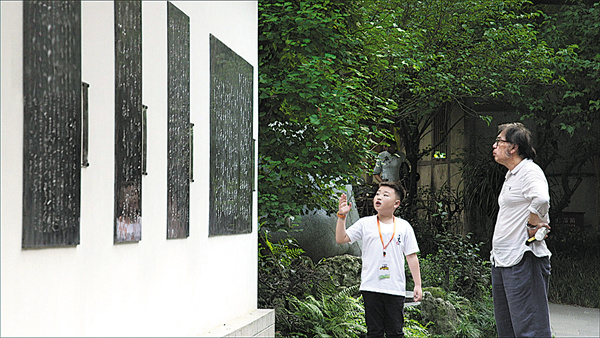

Be it presenters invited to go on these journeys, or local people they encounter on the way-all the people appearing in the documentary display one thing in common, that is, a genuine passion for Tang poetry.
"Why is Tang such a vastly adored era in Chinese history? It's not only because of its prosperity-the dynasty was not that prosperous in its later stage. However, openness and inclusivity continued to be a distinctive feature of the dynasty," Li Wenju adds.
Perhaps such mentality helped shape the worldview of Tang poets, as more than one speaker from the documentary expresses a similar view that these poets showcase a broad mind and an empathy for humankind in their poetry.
"If people could go traveling, it means an open and tolerant milieu, so when Tang people traveled, they took a view from above," Shou Hong, teacher from Lanting Calligraphy Art College, says in the second episode.
An important reference material for the production team is a digital map of writers from the Tang and Song (960-1279) dynasties developed by Wang Zhaopeng, a professor at South-Central Minzu University, who also appears in the documentary.
The map, which Wang's team spent five years developing, lists the poets in chronological order. Click on a name and the courses of their lives will be displayed on the map, showing the cities they visited and the poems they wrote there.